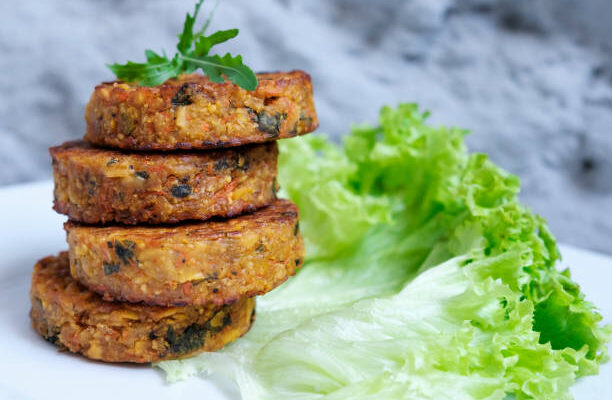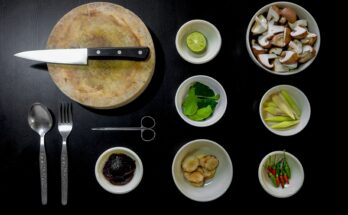In a world where health-conscious eating is becoming increasingly popular, replicating your favorite restaurant dishes or comfort foods in a healthier way is a skill worth mastering. Whether you’re looking to cut down on calories, reduce fat, or increase nutrient content, learning how to replicate a healthy dish can be both satisfying and beneficial for your well-being. This article will guide you through the process, offering valuable insights, tips, and techniques to help you recreate your favorite dishes with a healthier twist.
Choose Your Target Dish Wisely
The first step in replicating a healthy dish is selecting the right recipe or restaurant dish to work with. Consider your dietary goals and preferences. Are you looking to make a classic comfort food healthier, or do you want to recreate a favorite restaurant dish? Once you’ve decided, research the dish thoroughly, including its ingredients, preparation methods, and nutritional information.
Gather Essential Tools and Ingredients
 (Photo from iStock)
(Photo from iStock)
Before you begin replicating a healthy dish, make sure you have all the necessary tools and ingredients at your disposal.
- Cooking utensils: Ensure you have the right pots, pans, knives, and kitchen gadgets for the job.
- High-quality ingredients: Opt for fresh, organic, and minimally processed ingredients whenever possible.
- Substitutes: Identify healthier ingredient substitutes for items that are high in unhealthy fats, sugars, or other undesirable components.
- Spices and seasonings: A well-stocked spice rack can elevate the flavour of your dishes without adding extra calories or sodium.
Analyse the Original Dish
To replicate a dish, you must first understand its composition. Break down the original dish into its components: proteins, carbohydrates, vegetables, sauces, and seasonings. This analysis will help you identify areas where you can make healthier substitutions or modifications.
Reduce Unhealthy Ingredients
 (Photo from iStock)
(Photo from iStock)
One of the key principles of replicating a healthy dish is to reduce or eliminate unhealthy ingredients. Here are some common substitutions and modifications:
- Fats: Replace saturated fats with healthier alternatives like olive oil, avocado oil, or coconut oil. Use cooking spray instead of butter for greasing pans. Trim visible fat from meats and choose lean cuts.
- Sugars: Replace refined sugars with natural sweeteners like honey, maple syrup, or stevia. Reduce sugar quantities in recipes, as you can often use less sugar than called for without sacrificing taste.
- Salt: Lower sodium content by using herbs, spices, and citrus zest for flavour. Opt for low-sodium or no-salt-added versions of canned ingredients like beans or tomatoes.
- Cream and Cheese: Substitute heavy cream with low-fat yogurt or milk, and use reduced-fat or plant-based cheese options.
Increase Nutrient Density
While reducing unhealthy ingredients is essential, it’s equally important to increase the nutrient density of your dish. Incorporate more fruits, vegetables, whole grains, and lean proteins to enhance the nutritional value.
- Vegetables: Load up on colourful vegetables to add vitamins, minerals, and fibre to your dish. You can also try spiralizing vegetables as a pasta substitute or using cauliflower rice instead of regular rice.
- Proteins: Choose lean protein sources like skinless poultry, tofu, beans, or legumes. Marinate proteins with flavourful herbs and spices to add depth to your dish.
- Fibre: Incorporate high-fibre ingredients like beans, lentils, and whole grains to promote satiety and digestive health.
Experiment with Cooking Techniques
 (Photo from iStock)
(Photo from iStock)
Healthy cooking isn’t just about ingredients; it’s also about how you prepare them. Explore different cooking techniques to reduce the need for excess fats and oils:
- Grilling: Grilling imparts a smoky flavour and requires minimal oil. It’s a great way to cook lean proteins and vegetables.
- Roasting: Roasting vegetables enhances their natural sweetness.
- Steaming: Steaming retains the nutrients in vegetables while minimizing the use of fats. Invest in a steamer basket for your pots.
- Stir-Frying: Stir-frying quickly cooks ingredients with minimal oil. Use a non-stick pan or a wok to reduce the amount of oil needed.
- Baking: Baking allows you to achieve a crispy texture without deep frying. Use breadcrumbs or crushed whole-grain cereal for a healthier crust.
Portion Control
Even healthy dishes can be less healthy if portion sizes are too large. Use smaller plates and utensils to help gauge appropriate serving sizes. If you’re dining out, consider sharing dishes or requesting a to-go box to pack up half of your meal before you start eating.
Balanced Plating
Presentation plays a significant role in your dining experience. Arrange your replicated healthy dish thoughtfully on the plate, using a variety of colors and textures. Aim for a balanced plate with a combination of proteins, vegetables, and grains. Garnish with fresh herbs, lemon wedges, or a drizzle of healthy sauce to enhance visual appeal.
Taste Testing and Adjustments
Replicating a healthy dish often involves some trial and error. Taste your dish as you go and adjust seasonings, spices, or other ingredients as needed to achieve the desired flavour. Be patient and willing to adapt the recipe to your taste preferences.
Document Your Recipe
 (Photo from iStock)
(Photo from iStock)
Once you’ve successfully replicated a healthy version of your favorite dish, take the time to document your recipe. Write down the ingredients, measurements, and cooking instructions, including any modifications you made. This will make it easier to recreate the dish in the future and share your healthy recipe with others.
Practice and Refine
Becoming proficient at replicating healthy dishes takes practice. Continue experimenting with different ingredients, cooking techniques, and flavour profiles. Over time, you’ll become more skilled at transforming dishes into healthier versions.
Seek Inspiration from Healthy Cookbooks and Blogs
To expand your repertoire of healthy dishes to replicate, consider exploring healthy cookbooks and food blogs. These resources offer a wealth of creative and nutritious recipes. Particularly, look for dishes that align with your dietary goals and provide step-by-step instructions and nutritional information.
Conclusion
Replicating a healthy dish is a rewarding culinary journey that allows you to enjoy your favorite flavors while prioritizing your well-being. Additionally, by choosing the right target dish, gathering the necessary tools and ingredients, and making thoughtful substitutions and modifications. Moreover, you can transform indulgent recipes into nutritious creations. Experiment with cooking techniques, practice portion control, and focus on balanced plating to enhance your dining experience. But, you should remember that refining your skills and seeking inspiration from reputable sources will help you master the art of replicating healthy dishes. Overall, embrace the challenge, savour the results, and take pride in your ability to make every meal a healthier one.
Reference:
Tasty
Want to do a meal prep, what are you waiting, go check some amazing ideas for meal prepping, click on the link below:
How to do your meal prepping routine




